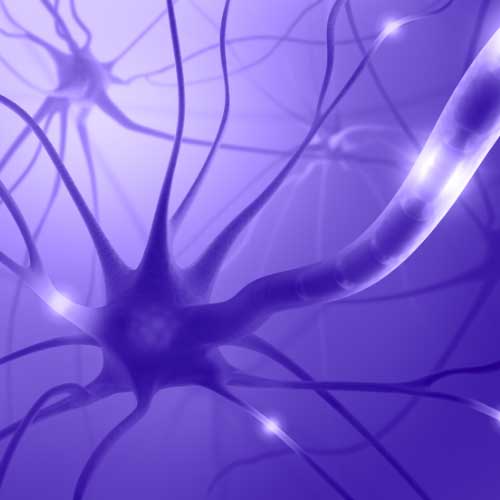The kainate receptor (KAR) is a type of receptor that responds to the neurotransmitter glutamate, and plays a key part in influencing how and when certain nerve cells ‘fire’ to activate contacted nerve cells by opening and closing to allow sodium or potassium ions through. Although they’re found throughout the brain, their precise function is somewhat mysterious; they play a part in how nerve cells develop, in the the regulation of neuronal plasticity (at a cellular level, this is a cell’s ability to respond to changes its electrical or chemical environment), they regulate cell connectivity and how neurons communicate with one another, but much still remains to be uncovered.
There are five different types of KAR subunit, 4 of which come together in different combinations, a bit like Lego bricks, to assemble the complete receptor. Also like Lego, they can combine in a variety of ways to make a tetrameric protein (so only four subunits are needed to make one functioning ion channel). Of these five, the most common one is known as GluK2, which can be modified by the cell to modulate its behaviour. One way that GluK2 is modified is by a process called transcriptional genomic editing. In this case, such editing replaces amino acid glutamine (Q) with arginine (R); this is known as Q/R editing. GluK2 subunits are predominately unedited during birth but around 85 percent of them rapidly edited after first few days of birth.
Dr Sonam Gurung, from the School of Biomedical Sciences has used the Elizabeth Blackwell Institute Discipline Hopping Fellowship to extend her PhD studies with Jeremy Henley on the biochemistry of GluK2 editing. Under the supervision of Professor Jack Mellor, she looked into the implications on KAR function. Initially, Dr Gurung’s studies focused on cell biology in primary neuronal cultures, although it soon became clear that a different type of investigation was needed to more fully understand the more complete picture: “Unedited receptors have different ion channel properties to their edited counterpart, and I’d previously shown that Q/R editing of GluK2 increases the amount of the receptor expressed at the cell surface. So it was important to understand what consequence this has on functional intact neuronal systems, which is why I turned to electrophysiology.”
Electrophysiology, in this instance, can be used to investigate the firing patterns of cells in a given brain region in response to different stimuli. Dr Gurung focused on circuits within the Mossy fiber (MF)-CA3 region of the mouse hippocampus - a brain area intimately implicated in learning and memory - to try to understand the role of GluK2 Q/R editing on synapses in intact circuits. Within MF-CA3 synapses, KARs (those particularly containing the GluK2 subunit) have been shown to play a key role in plasticity, so she took mice which lack the ability to Q/R edit the GluK2 subunit to see if there was any difference in the two different types of short term plasticity (paired pulse facilitation, or PPF, and frequency facilitation, or FF).
Dr Gurung found, to her surprise, that FF was reduced in these mice, while PPF was unchanged, suggesting a decrease in KARs at presynaptic sites. Interestingly, she also found an increase in the KAR currents within the CA3 post synaptic region. Q/R editing, therefore, may be able to alter KAR transportation to the pre- and post-synaptic sites - and KAR processing in this way might influence information transfer and processing.
Clearly, there are more questions to answer; the precise role of this pre- and post-synaptic expression in a variety of disease states (particularly epilepsy), learning and memory, and the role of this receptor during normal and pathology development. To this end, Prof Jeremy Henley (PhD supervisor) and Prof Jack Mellor (EBI fellowship supervisor) have successfully secured funding for 3 years to continue this investigation in University of Bristol.
Dr Gurung said “The Elizabeth Blackwell Institute Discipline Hopping Fellowship provided bridging funds to perform the critical experiments which helped convince the Leverhulme Trust grant awarding panel to support further research in this exciting (and under-explored) area of brain function.
